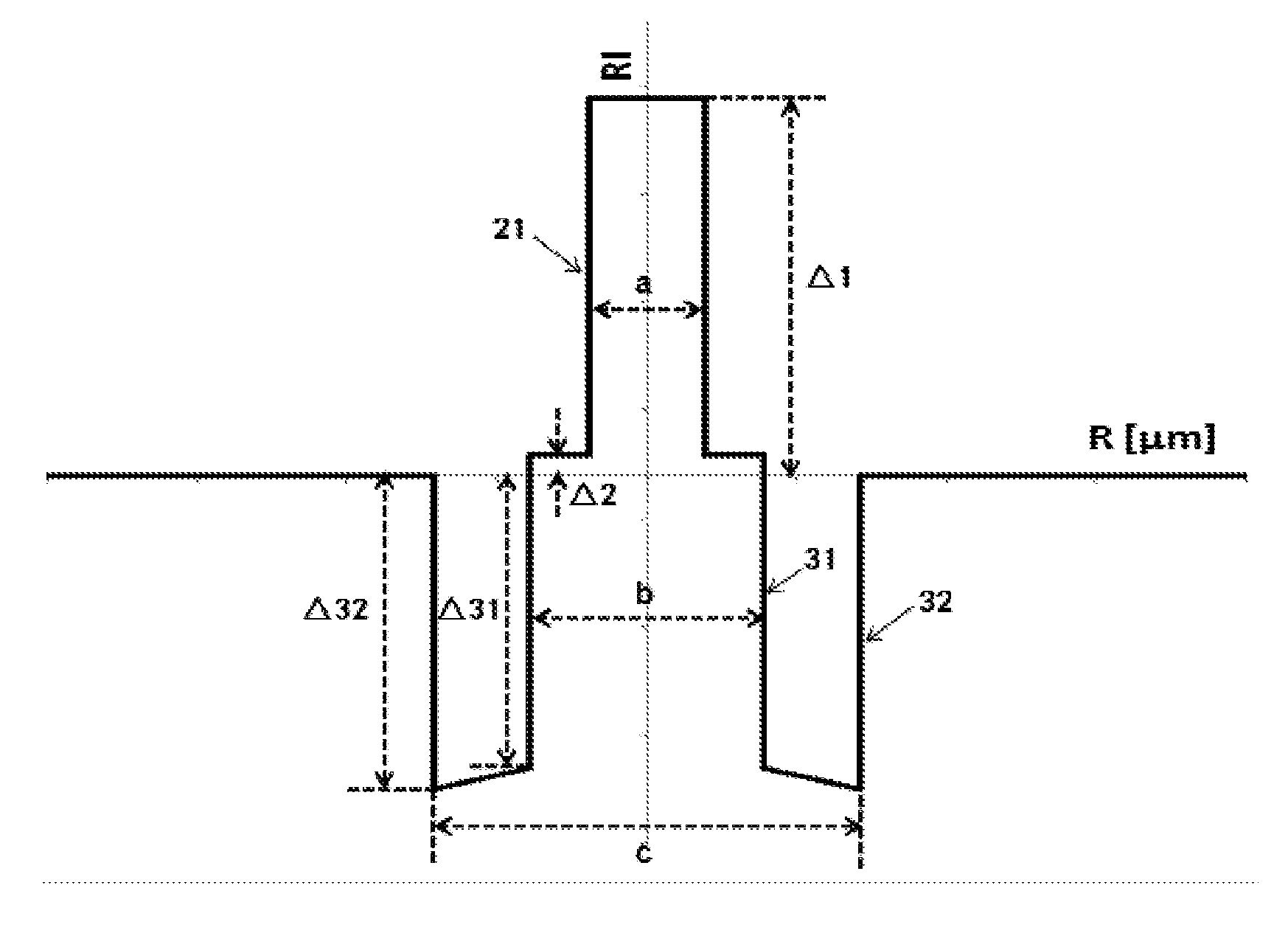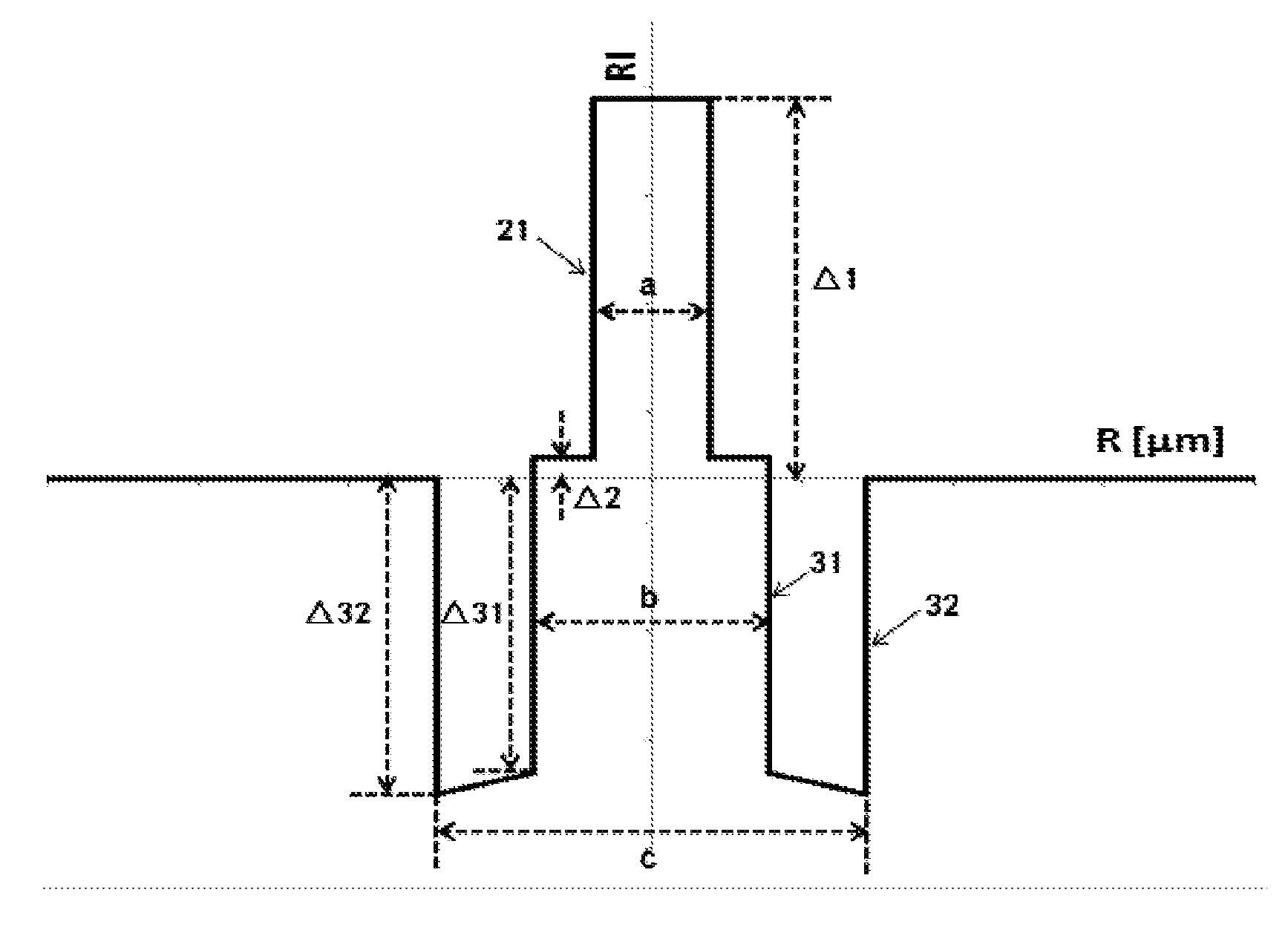Bending insensitive single mode optical fiber
a single-mode optical fiber, insensitive technology, applied in the direction of optical fiber with graded refractive index core/cladding, optical waveguide light guide, instruments, etc., can solve the problems of large connection loss, limited incident optical power, and limited space for the cut-off wavelength of the optical fiber, so as to enhance the bending resistance not affect the mechanical performance of the optical fiber. , the effect of high thermal expansion coefficien
- Summary
- Abstract
- Description
- Claims
- Application Information
AI Technical Summary
Benefits of technology
Problems solved by technology
Method used
Image
Examples
embodiment 1
[0055]Referring to FIG. 1, the bend insensitive single-mode optical fiber in this embodiment includes a core layer and cladding layers surrounding the core layer. The cladding layers have an inner cladding layer, a trench cladding layer, and an outer cladding layer sequentially formed to cover the core layer from inside to outside. The relative refractive index difference Δ3 of the trench cladding layer changes in a gradient manner, and increases gradually from outside to inside. The relative refractive index difference Δ32 at the outermost interface 32 is smaller than the relative refractive index difference Δ31 at the innermost interface 31. The outer cladding layer surrounds the trench cladding layer. The diameter d of the outer cladding layer is about 125 μm. The refractive index of the outer cladding layer is the refractive index of pure silicon dioxide glass.
[0056]The core layer and the inner cladding layer are a germanium and fluorine doped quartz glass layer, comprising the ...
embodiment 2
[0064]In this embodiment, in the design of the optical fiber section, the MFD of the optical fiber is appropriately reduced to lower the MAC, so as to further optimize the macro-bending performance of the optical fiber. As the MAC lowers, some changes occur to the dispersion and mode field diameter. The optical fiber in this embodiment can meet the G.657.B3 standard but is not compatible with the G.652.D standard.
[0065]In this embodiment, the PCVD+OVD processes are still adopted to prepare the G.657 optical fiber perform, where the drawing speed is 1500 m / min, and the fiber diameter of the naked optical fiber is 125±0.7 μm. A double-layer ultraviolet-cured optical fiber coating is adopted, and after applying, the outer diameter of the optical fiber is 245±7 μm.
[0066]The structure of the optical fiber and the material formation are shown in Table 3, where the refractive index parameter in Table 3 is an arithmetic mean of practical optical fiber parameters. Table 4 is performance data...
PUM
 Login to View More
Login to View More Abstract
Description
Claims
Application Information
 Login to View More
Login to View More - R&D
- Intellectual Property
- Life Sciences
- Materials
- Tech Scout
- Unparalleled Data Quality
- Higher Quality Content
- 60% Fewer Hallucinations
Browse by: Latest US Patents, China's latest patents, Technical Efficacy Thesaurus, Application Domain, Technology Topic, Popular Technical Reports.
© 2025 PatSnap. All rights reserved.Legal|Privacy policy|Modern Slavery Act Transparency Statement|Sitemap|About US| Contact US: help@patsnap.com



